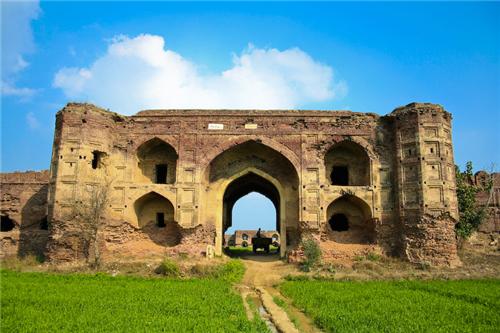
Have your Delhi to Ludhiana taxi booked as you plan a history tour of the city of Ludhiana? The trip to city is going to be informative, enjoyable and memorable for sure. Ludhiana is the biggest city of Punjab and stands on the old bank of the River Sutlej. The historical backdrop of Ludhiana begins from fifteenth century. It was a little town called Mir Hota in 1481 and it then got the name of Lodiana significance the spot of Lodi. Ludhiana is the transformation of the name Lodiana. It was called so on the grounds that the city was made amid the time of Lodi administration who ruled over India from Delhi.
In the fourth century, Samudragupta ruled over the area and the spot was occupied just in ninth century. The general population of Ludhiana were confronting steady dangers from Baluchis and they argued Sikandar Lodi to ensure them. Two chieftains, Yusuf Khan and Nihang Khan were sent to the spot with an armed force. Nihang Khan stayed there as the lieutenant of the King Sikandar Lodi and changed the name of the spot into Lodiana. The Lodi stronghold was worked by his grandson Jalal Khan. His children, Ali Khan and Khizr Khan isolated the spot in the middle of them and began to manage their regions. It was amid that time that Babur assaulted the Lodi tradition and removed it. This episode occurred in 1526. Ludhiana then got to be one of the parganas of Mughal Empire.
Rais of Raikot broadened their control over Ludhiana. They could affirm their autonomy after the demise of the Mughal Emperor Akbar in 1705. The locale went under the guideline of Raja Ala Singh of Patiala and Rai Kalha II. At the point when Nadir Shah came to India, he crossed the Sutlej River close Ludhiana. At the point when Ahmed Shah Durrani attacked India in 1747, he confronted the resistance of Rais. He designated Zain Khan as his Governor. Zain Khan was crushed and executed by the Sikhs and Ludhiana went under the complete control of the Rais. Ahmed Shah went to the spot for the last time in 1767. In 1785, there was a change obviously of the River Sutlej. The spot needed to confront the assault of Sikhs under the authority of Bedi Sahib Singh in 1798. The ruler Rai Alias was just a kid around then and the genuine defenders of the state were his watchmen, Roshan and Gujar. They battled against Bedi Sahib. Roshan was murdered in the battle. Later with the assistance of Phulkas and British General George Thomas, the city was shielded from Bedi. Maharaja Ranjit Singh crossed the River Sutlej thrice, the first run through in 1806 and the toward the end in 1809 as a move to add it. Be that as it may, the British armed force under the administration of Colonel David Ochterlony protected the spot and in 1809, the Treaty was marked with the Ranjit Singh of Lahore. English built up their changeless armed force station in that district to secure against any future assaults.
The Jind family administered over Ludhiana to start with of nineteenth century. In 1835 there was no lawful beneficiary to the kingdom thus as indicated by the Doctrine of Lapse the city was added to British India by the East India Company. Sikh society is predominant in the city and Ludhiana photographs and Ludhiana recordings would talk about the same.
Now that you know the history of this city, you can check out the important historical places of the city. The places to visit in Ludhiana include Lodhi Fort, Gurudwara Charan Kamal, Phillaur Fort, Maharaja Ranjit Singh Museum, etc. Have a great trip!
About the Author
Dimpy Roy is a travel writer working with an Online Travel Guide. She helps travelers to find the best Delhi to Ludhiana taxi for hazzle freee journey.







